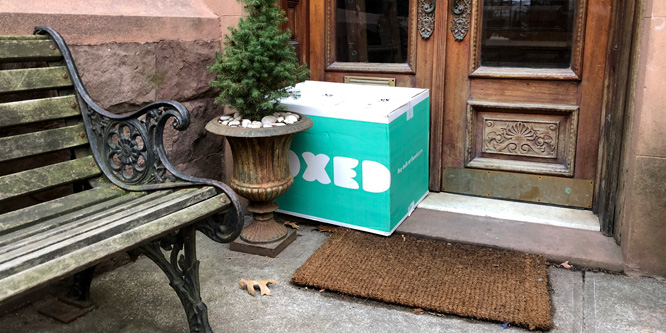
Photo: RetailWire
April 4, 2018
Should retailers lower expectations around last-mile delivery?
According to the inaugural Retail TouchPoints’ “Last Mile Benchmark Report,” the biggest last-mile challenges for retailers are expectations for fast and free delivery.
The top-three challenges were:
- Expectations on delivery times, cited by 49 percent;
- Rising shipping costs, 47 percent;
- Expectations of free/low-cost shipping, 44 percent.
The study, sponsored by Oracle and Convey, surveyed 146 retail executives.
The authors advised retailers to rethink whether every order needs to be delivered within 12, 24 or 48 hours. The reported stated, “If consumers are confident that their order will arrive when the retailer has said it will, they might be more willing to wait a few days.”
However, Amazon Prime continues to raise the bar on fast and free delivery, the report found. According to the 2018 AlixPartners Home-Delivery Shopping Survey, the maximum number of days people are willing to wait for an item to be delivered in exchange for free shipping has decreased, from 5.5 days in 2012 to 4.1 in 2018. The same survey found that only 19 percent of Prime members would wait a week in exchange for free shipping versus 31 percent of non-Prime members.
A December 2017 survey by L2 also revealed that 77 percent of brands are offering free shipping.
Not surprisingly, consumers’ expectations have also elevated around accurate deliveries, hassle-free returns and enhanced visibility into both delivery and returns, according to the Retail Touchpoints report.
Retailers in the study said they were addressing some of the challenges through efforts to seek out the most optimal transportation routes and trying new business models for shipping and returns.
But only a minority of retailers were found to be using technologies such as transportation management solutions or route optimization systems. Few are using last-minute data to determine efficient delivery routes or offer incentives to consumers to fit more items in a box.
The report concluded: “[Retailers] need to gather insights about price sensitivity and elasticity in the last mile, so that they can begin recouping at least some of their costs without alienating customers. They should invest in back-end systems that allow them to make firm delivery date promises, and to proactively prevent missteps that can damage the customer relationship.”
Discussion Questions
DISCUSSION QUESTIONS: How close do retailers have to be to matching Amazon’s benchmarks for fast and free delivery? Should retailers focus on innovation or reworking their processes to address last-mile challenges? Or should retailers instead try to lower consumer expectations?
Poll
BrainTrust
Ron Margulis
Managing Director, RAM Communications
Recent Discussions

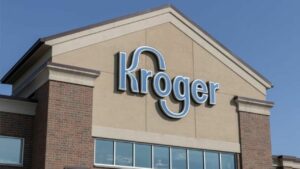
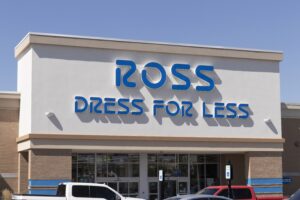

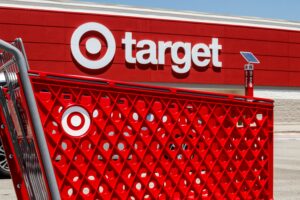
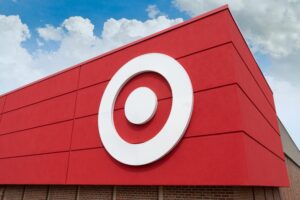

Don’t be tunnel vision-focused on Amazon. Instead, give shoppers choices. Break the paradigm. On a Sunday night, when I purchase a new pair of jeans online from a retailer I trust, I don’t necessarily need it the next day. Actually, take your time. I need them by next Saturday — so five-day shipment is OK. Moral of the story: ask the customer. Give them the option for an extra fee for speed. Many times they won’t take you up on it. When super speed is important, then give them the option to pick up in-store (which should be the fastest option, and where Amazon does not compete as effectively, yet).
Don’t try to lower expectations. Rather give shoppers more choices. Giving them options from which to choose will result in greater satisfaction, loyalty and will save retailers money.
Retailers are driven by consumer expectations and, on delivery, consumers are very demanding, wanting faster and more flexible service. Unfortunately those same consumers do not want to pay much, if anything, for this.
The solution, imperfect though it is, is to offer a range of delivery options at a range of price points. This allows consumers to make the trade off between speed, flexibility and price.
Trying to change the consumer or lower expectations is never a good idea and nearly impossible.
Retailers should treat fast and free shipping as part of their marketing because that is what it is. Fast and free shipping is a conversion driver in e-commerce. This has been proven time and again.
Zappos created a successful company based on free shipping both ways and on being clear at checkout on the timing of delivery.
Chewy offered free shipping on commodity pet products and built a business around it.
It took Walmart 12 years to respond to Amazon’s free two-day shipping and they put a minimum purchase on it so it diluted the response.
Why fight the consumer expectation or try to change an expectation? Why not change your operating systems to provide the consumer with what they want and build a loyal customer base?
Managing the costs is the biggest concern as shipping expectations will not be going down from consumers. As I wrote in this post, What’s The Best Shipping Software For Your Retail Operations?, retailers should look for a multi-carrier shipping software that automatically chooses the best options to get their orders on the truck faster. A carrier-agnostic platform means USPS, FedEx, DHL — virtually all of your shipping carriers and their services — are shopped to find the best rate possible for both domestic and international shipments. Software like ProShip can figure out the optimal way to ship/deliver with least problem from store, distribution center or other.
Amazon sets a pace, but all retailers do not have to keep up. Consumers want free shipping and returns. Beyond that, a reasonable delivery date will be satisfactory for many orders. It’s important for retailers to be precise with setting customers’ shipping expectations. Once set, the retailer needs to meet them.
The bar has been set by Amazon. Anything less than being the same or better than Amazon is a failure in the consumer’s eyes.
The fact that there is any discussion at all about today’s table-stakes in delivery is in itself disturbing.
Amazon is writing the rules right now. Low- or no-fee shipping cost them billions last year and few others can make that kind of investment. While every retailer needs button up shipping to be as fast and reliable as possible, they also need to be experimenting with new tools that let them change the game vs. simply going head to head.
Lowering consumer expectations will not work if you have Amazon pushing last-mile delivery at the same time. The customer will decide by clicking the “Buy” button at Amazon and it will mean lost sales. Retailers need to work on a seamless omnichannel concept with their store network as an experience center in the center of it.
This is all about providing options. We are nearing a critical inflection point on the supply/demand curve of last-mile shipping, whereby customers will have to pay a premium for certain delivery times. With every retailer raising last-mile expectations, the current model is not sustainable — for retailers, postal services or the customer.
This will require postal services to get better with real-time logistics/data to allow retailers/customers to choose exact delivery times — and to pay dynamic rates for the respective slot and the exactness that comes from it. Under this model, it becomes less about the expectation of matching Amazon’s benchmarks.
Retailers don’t set expectations, customers do. And their expectations have evolved to be more than just price. In a recent study, ability to schedule shipping within a specific time slot ranked nearly as high as speed of delivery. A high percentage of customer will order elsewhere if they do not receive tracking reports for their shipments.
Shipping costs for the last mile are killing everyone, including Amazon. Amazon is doing exactly what the study concluded and is researching all types of options for price elasticity, including rebates for Prime members who are willing to opt for more than the standard two day window.
Delivering on the last mile is not optional. Doing it profitability requires learning what your customers value as important. What is important is situational depending on category, season and reason for purchase. There is no one-size-fits-all.
Fast won’t be as important as free in most instances — but “free” will be a must. Consumers now view shipping charges with almost the same disdain as those obnoxious “just pay shipping and handling” TV ads. For a consumer to accept traditional shipping methods the product will have to be a.) something I really want or need, and b.) something for which there is no acceptable substitute available on Amazon.
Tough answer. Realistically, few of us need two-hour delivery of shoes or a sweater (medicine and pizza, yes). Lowering the bar, if it could be done subtlety and over time, won’t hurt but it will be cheaper.
Free shipping is becoming the norm. Consumers will go shopping for free shipping if the retailer doesn’t offer it. And now the benchmark is set by Amazon. The likelihood of lowering consumer expectations, after Amazon and other retailers have raised them, is unlikely, if not downright impossible. The focus should be on a value proposition that meets (or even better, exceeds) the customer’s expectations.
Consumers may benchmark other retailers against Amazon’s fast and free shipping, but it is difficult for other retailers to match both when they must generate a profit on the sale. Amazon has the unique advantage in that they don’t seem to have to make a profit as a retailer — yet. As other have suggested, offer the consumers options for delivery times and cost — letting them select what works for their wallets and need for speed.
Retailers do not have to match Amazon’s benchmarks if they provide other value to the consumer. If advice or service from associates is important to the consumer and a trust relationship is in place between the two parties, the speed of delivery is not as important. This reminds me of the discussion several years ago about showrooming being the end of Best Buy. That did not occur because Best Buy responded to their consumers’ interests for technical and other product support and service. While retailers should focus some attention to making last-mile delivery more efficient, their time would be better spent on providing unique products or better service to their customers.
I may not need same-day, next-day or even two-day delivery on many items, but I’m certainly going to check those boxes if the price is the same as an order showing up in a week.
This is not new news. In 2015 and 2016 RSR ran a 360 degree study around home delivery. We found that consumers’ threshold for free delivery is no more than $100 and the fee they were willing to pay was $5. It’s not just Amazon … it’s the state of the retail union and has been for some time. It’s actually BIGGER than Amazon, because customers also expect two-hour delivery windows.
On a personal level, when I went to Sears and spent really stupid money on a washer/dryer (I love good appliances) and they tried to charge me $15 for a two-hour window, I said I would walk out of the store and walk away from what had become a $2,800 sale if they didn’t make that number zero. It’s actually insulting. And it’s the way it is now.
For what it’s worth, Amazon’s white glove delivery of big ticket items is pretty sub-standard, in my opinion, and they’d have to work hard to gain my business again. They really made a hash of a large screen TV delivery and set-up. So Amazon is not the problem.
Good point about the washer/dryer, Paula — it seems fair for customers to have high expectations of quality delivery and complete service (installation, etc.) for large-ticket (and physically large) items they’re investing in.
I think the genie is out of the bottle when it comes to customer expectations around delivery and there’s not much retailers can do about that. Amazon is going to keep pushing fast, free delivery further and further, but right now even it isn’t as fast as someone like Argos where you can reserve items and pick up in-store straight away.
The main thing retailers need to do is to get their house in order. They need to underpromise and overdeliver — not the other way round. If they can’t maintain next-day free delivery it shouldn’t be an option. But they should make sure that every delivery option that they do have works brilliantly so customers have confidence buying from them. I also think that consumers are still OK with the idea that you pay more for quicker delivery and that if you want shipping for free you wait a bit longer — let’s not forget that Amazon Prime isn’t a free service.
As important as shipping is, retailers need to make sure they can get the item packaged and ready to ship ASAP.
Some retailers focus all on shipping and forget about noting the handling which causes more issues with their shoppers then anything else when it comes to home delivery.
Amazon, WM, Gap Inc, and a handful of other retailers will offer a variety of shipping options and then in fine print will state the handling time associated with the order which might be longer than the actual shipping time.
If a consumer is not careful, they’ll select 3-5-day shipping thinking they will put an order in at the beginning of the week and get it by the weekend only to find out that it just got picked up by the carrier on that Thursday or Friday and the package won’t arrive till next Wednesday or Thursday (7-10 days after the order).
This could be a transitional time for home delivery of food products. With Amazon setting the standard on non-perishables, US supermarket operators appear to be testing the waters with various models. I think solutions will be dependent on geography and demographics. Which means that larger operators will likely field variations across their markets.
I’m not sure that the last mile needs to be home delivery for all variations. It’ll be interesting to watch Kroger’s Mariano’s pick-up version as it develops. I think the solutions that survive will focus on how best to use personal technology.
Retailers have fallen into the trap of setting very high expectations for delivery of online purchases. Customers do not always need to have their purchase delivered the same day, within the hour or next day, but it has become a battle ground for etailers and multi-channel retailers. It is certainly not supply chain professionals who have created this problem but marketing men wanting to be state-of-the-art and gain a competitive advantage. The added cost that this drives into a business is enormous and to make it even worse, marketers include these crazy delivery promises for free! There are very few online retailers who make a profit and at some point there will be a realization that customer expectations will have to be changed. It is always difficult to get the genie back in the bottle but for economic and environmental reasons, this is one time when it really must be addressed.
The leverage Amazon has is the $100 that more than half the families in the US pay for Prime each year. They were first, so the fee has become a utility. From a consumer’s perspective, she or he doesn’t need another fee for the same kind of utility — no one will pay for two different electricity sources. That’s the real challenge other retailers face.
While Amazon’s fast and free deliver is exclusively for Prime Members, I doubt that consumers factor that into their expectations for other retailers. Therefore, the bar has been set and retailers need to come close to the same level of service for their customers. Changing customer expectations is not a realistic strategy.
The challenge for retailers is to strike a balance between customer expectations and profitable sales. The delivery costs need to be factored into product pricing or covered by membership programs — otherwise it will likely result in unprofitable sale sales. Retail is getting more challenging every day!
It’s becoming too easy to blame Amazon for every challenge retailers face today! Consumer expectations rarely (let’s face it, never) move backward. Once the genie is out of the bottle, it’s not going back in!
Amazon’s policies and pricing aren’t the problems — it’s the customer expectation for free and fast that are the challenges. Customers won’t need every item purchased delivered at the same speed, and this should be seen as an opportunity to introduce shipping options at different price points. Not every customer will jump at same day delivery for every item, but if you make everything free, then customers will always pick the fastest option “just in case.”
There is a fine balance between managing shipping costs against customer expectations and retailers need every tool they can get to help on the cost side. Retailers need to find other ways to enhance the end-to-end purchase experience to compensate for delivery cost and speed. This is where leveraging stores for returns can be an important factor, to name one.
Transparency is key. Not all retailers can afford to ship all products in 2 days for free. Just because Amazon is able to handle this cost, that doesn’t mean that all retailers must jump to mimic them. I agree with Charles that options are necessary. And omnichannel retailers are best positioned to meet shopper needs profitably, with the ability to ship to/from stores. Retailers must provide an accurate estimate of when shoppers will get the product and give the ability to choose the shipping option that meets shopper needs and budget.
Regardless of what is fair, no shopper — not one — will be unhappy with fast and free delivery. The bar has been set and I don’t see anyone losing sight of it anytime soon. All B2C organizations, retailers, D2C CPG Brands, etc., need to optimize the revenue and margin curves to “deliver” the best shopping experience NOW before they are irrelevant.
Working to lower consumer expectations is the LAST THING retailers should be doing. Wow! Customer–obsessed actions reap big rewards, so retailers need to figure out the back end or wave goodbye forever to shoppers they can’t live without!